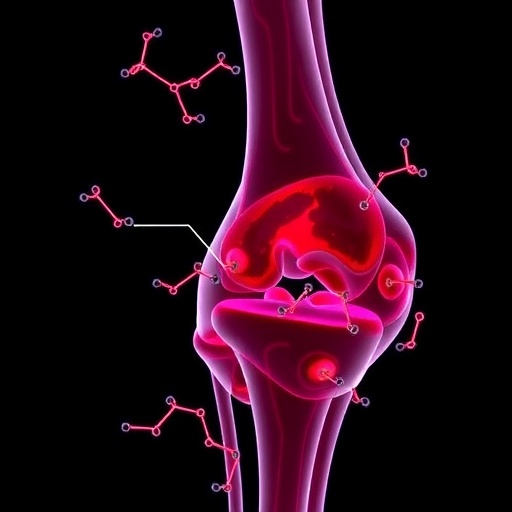An advanced form of image-guided radiation therapy, known as intensity modulated proton therapy (IMPT), has shown early promise for the treatment of recurrent lung cancer, according to new research from The University of Texas MD Anderson Cancer Center. Researchers found that after reirradiation with IMPT, the majority of patients were free from local recurrence one year following treatment and few experienced severe side effects.
The data, presented at the 2017 Multidisciplinary Thoracic Cancers Symposium, is the first to analyze reirradiation of thoracic cancers with IMPT and offers hope for a patient population with few curative treatment options.
Lung cancer is the leading cause of cancer death in the U.S. According to the American Cancer Society, more than 222,500 people will be diagnosed and 155,870 will die from the disease in 2017, with recurrence the primary cause of death in these patients.
As many recurrent lung cancer patients are not candidates for surgery, and response rates to second-line chemotherapy are poor, there's been growing interest in the repeat use of radiation, explained Jennifer Ho, M.D., resident, Radiation Oncology.
"Historically, repeat radiation at a higher, curative dose was not possible with older, less precise radiation techniques because the cumulative radiation dose necessary to treat the cancer would cause too much toxicity," said Ho, the study's lead author. "In lung cancer, tumors are close to the esophagus, aorta and spinal cord, and all of these critical structures are vital for the body to function. The proton beam – and pencil beam in particular — provides much more conformal radiation, which means higher doses to tumors and lower dosages to critical structures nearby."
IMPT, one of the most advanced forms of proton therapy, is based on scanning beam technology that can simultaneously optimize intensities and energies of all pencil beams to deliver a precise dose of protons to tumors, explained Joe Y. Chang, M.D., Ph.D., professor, Radiation Oncology.
"The technology has the ability to destroy cancer cells while sparing surrounding healthy tissue from damage. Therefore, important quality of life outcomes can be preserved and severe toxicities have shown to be reduced," said Chang, the study's corresponding author.
For the single-institution study, the researchers retrospectively analyzed 27 patients who received IMPT for a lung cancer recurrence between 2011 and 2016. All patients had received a prior thoracic radiation course with curative intent. Of the cohort, 22 (81 percent) were treated for non-small cell lung cancer. The median time to reirradiation after initial treatment was 29.5 months.
At a median follow-up for all patients of 11.2 months – and 25.9 months for those still alive – the median overall survival (OS) was 18 months, with one year OS at 54 percent. Four patients (15 percent) experienced a local failure (LF), recurrence within the reirradiation field; 78 percent of patients did not experience a LF within the first two years of follow-up. At one year, 61 percent of patients were free from recurrence in the chest and lung, and progression-free survival was 51 percent.
Of particular interest to the researchers, patients who received a higher dose of radiation had fewer local recurrences and improved progression-free survival.
Reirradiation was well-tolerated, with two patients experiencing grade three pulmonary toxicity and none with severe esophageal toxicity. No patients experienced grade four or five toxicities. Historically, reirradiation of the lung was associated with moderate to severe toxicity, even fatal, toxicities in 20 to 30 percent of patients.
"With the advancement of IMPT, we knew that we were able to generate more precise radiation treatment plans that spared normal tissue, but we weren't sure if this would translate into beneficial clinical outcomes until we analyzed this data," said Chang. "While the findings are early, we're hopeful that we can offer more positive outcomes and low toxicity with IMPT for recurrent thoracic cancer patients who previously had few treatment options."
Limitations of the study include its small size and retrospective data. Reirradiation with IMPT in other disease sites is an area of continued research interest; studies in head and neck cancer are ongoing at MD Anderson.
###
In addition to Ho and Chang, other authors on the all-MD Anderson study include: Quynh-Nhu Nguyen, M.D., Pamela K. Allen, Ph.D., Daniel R. Gomez, M.D., Ritsuko U. Komaki, M.D., Z. Liao, Stephen M. Hahn, M.D., Steven H. Lin, M.D., Ph.D., all of Radiation Oncology; Heng Li, Ph.D., Xiaodong Zhang, Ph.D., X. Ronald Zhu, Ph.D., and Michael T. Gillin, Ph.D., all of Radiation Physics.
Media Contact
Laura Sussman
[email protected]
713-745-2457
@mdandersonnews
http://www.mdanderson.org
############
Story Source: Materials provided by Scienmag




